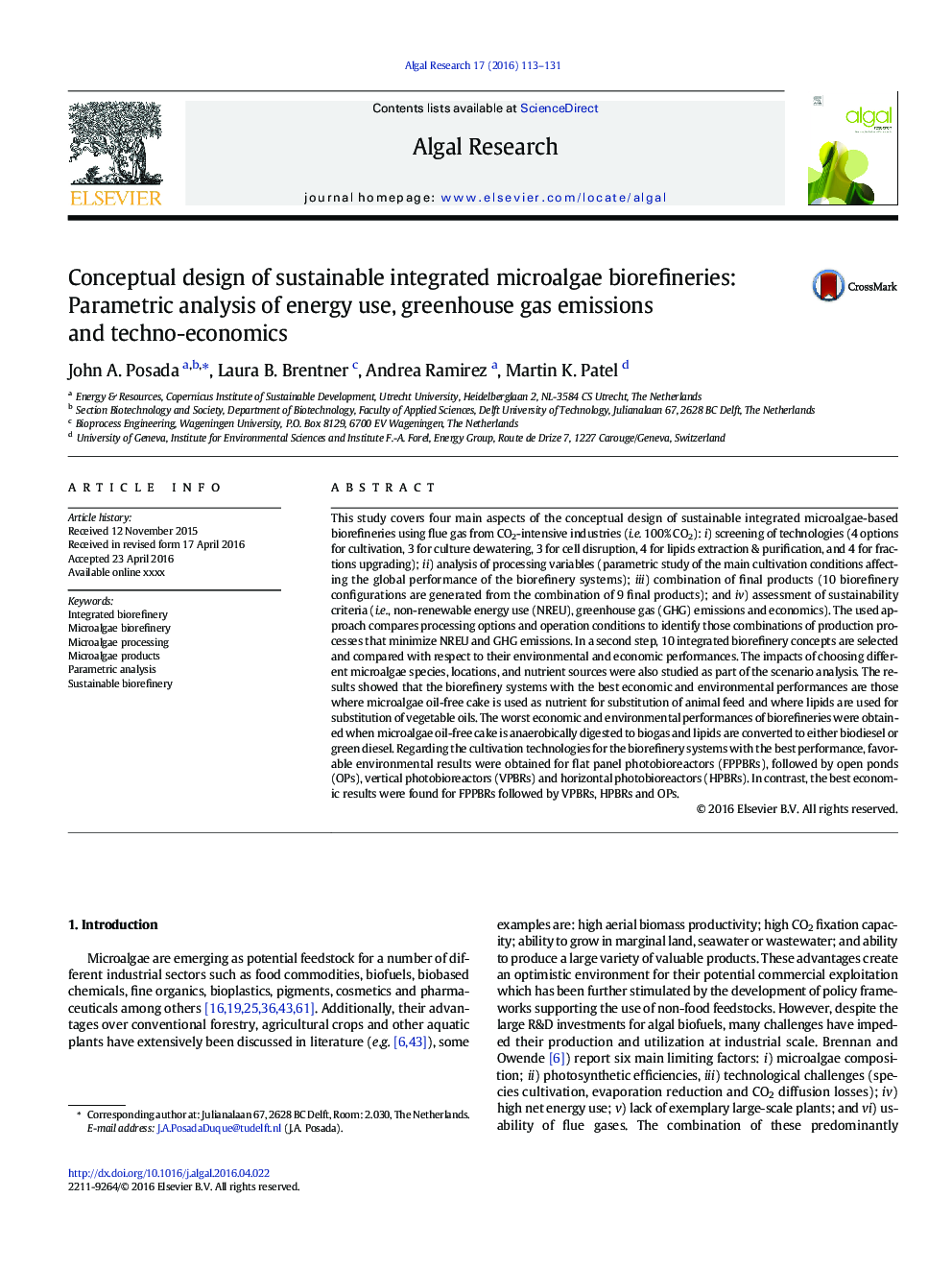| Article ID | Journal | Published Year | Pages | File Type |
|---|---|---|---|---|
| 8086963 | Algal Research | 2016 | 19 Pages |
Abstract
This study covers four main aspects of the conceptual design of sustainable integrated microalgae-based biorefineries using flue gas from CO2-intensive industries (i.e. 100% CO2): i) screening of technologies (4 options for cultivation, 3 for culture dewatering, 3 for cell disruption, 4 for lipids extraction & purification, and 4 for fractions upgrading); ii) analysis of processing variables (parametric study of the main cultivation conditions affecting the global performance of the biorefinery systems); iii) combination of final products (10 biorefinery configurations are generated from the combination of 9 final products); and iv) assessment of sustainability criteria (i.e., non-renewable energy use (NREU), greenhouse gas (GHG) emissions and economics). The used approach compares processing options and operation conditions to identify those combinations of production processes that minimize NREU and GHG emissions. In a second step, 10 integrated biorefinery concepts are selected and compared with respect to their environmental and economic performances. The impacts of choosing different microalgae species, locations, and nutrient sources were also studied as part of the scenario analysis. The results showed that the biorefinery systems with the best economic and environmental performances are those where microalgae oil-free cake is used as nutrient for substitution of animal feed and where lipids are used for substitution of vegetable oils. The worst economic and environmental performances of biorefineries were obtained when microalgae oil-free cake is anaerobically digested to biogas and lipids are converted to either biodiesel or green diesel. Regarding the cultivation technologies for the biorefinery systems with the best performance, favorable environmental results were obtained for flat panel photobioreactors (FPPBRs), followed by open ponds (OPs), vertical photobioreactors (VPBRs) and horizontal photobioreactors (HPBRs). In contrast, the best economic results were found for FPPBRs followed by VPBRs, HPBRs and OPs.
Related Topics
Physical Sciences and Engineering
Energy
Renewable Energy, Sustainability and the Environment
Authors
John A. Posada, Laura B. Brentner, Andrea Ramirez, Martin K. Patel,
